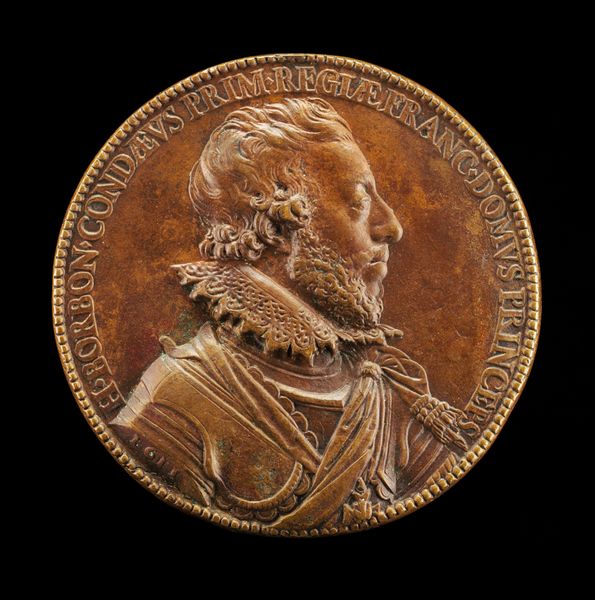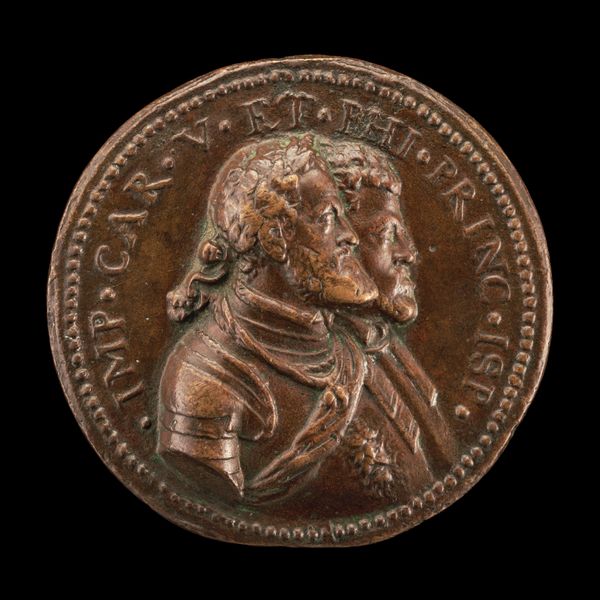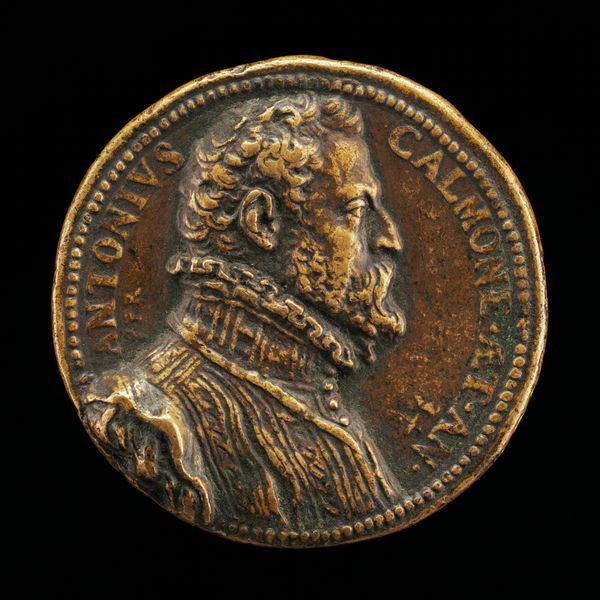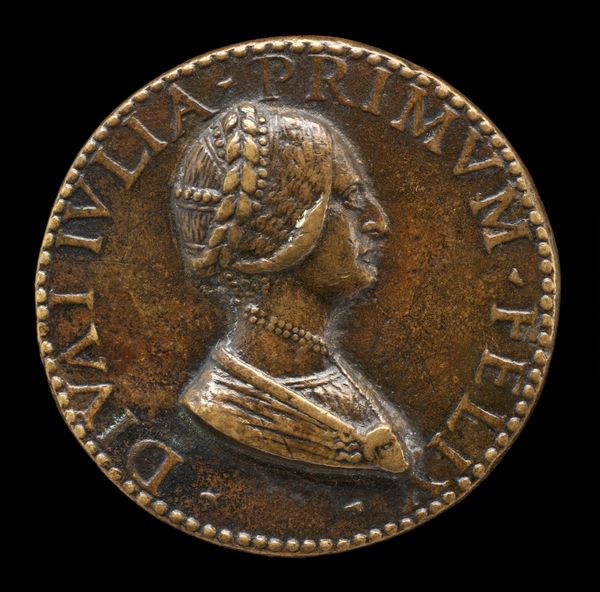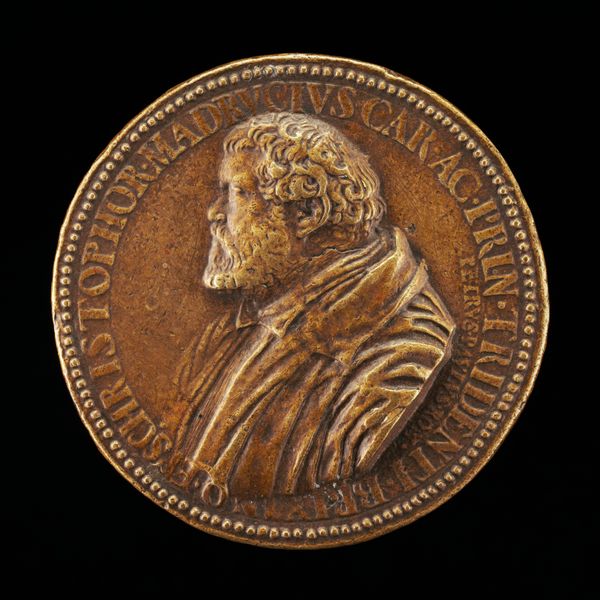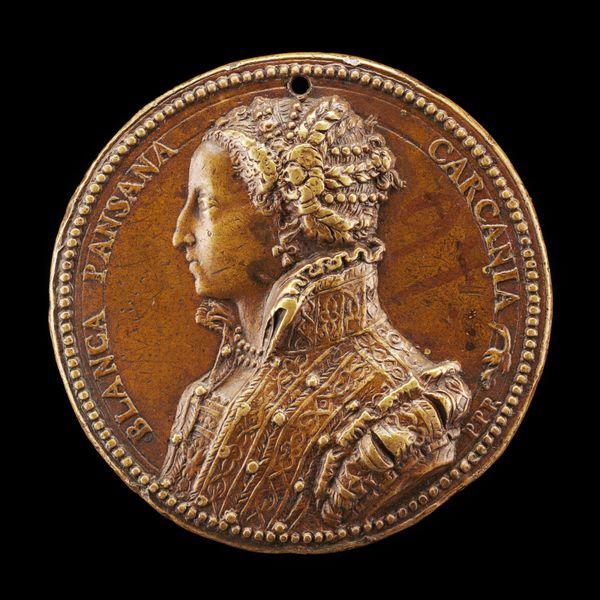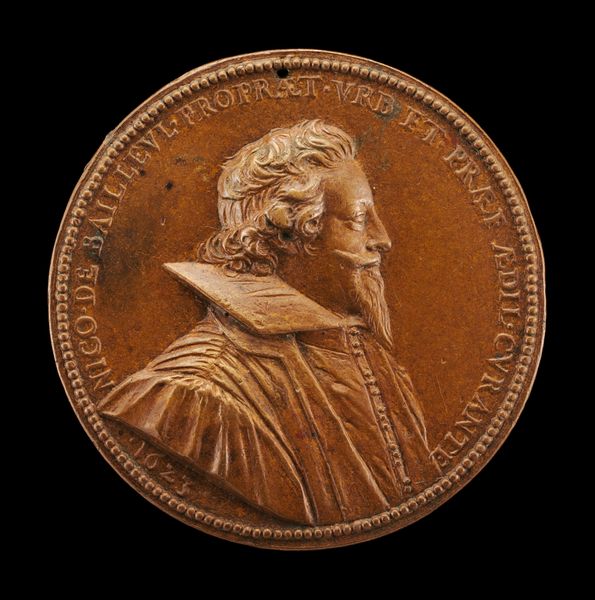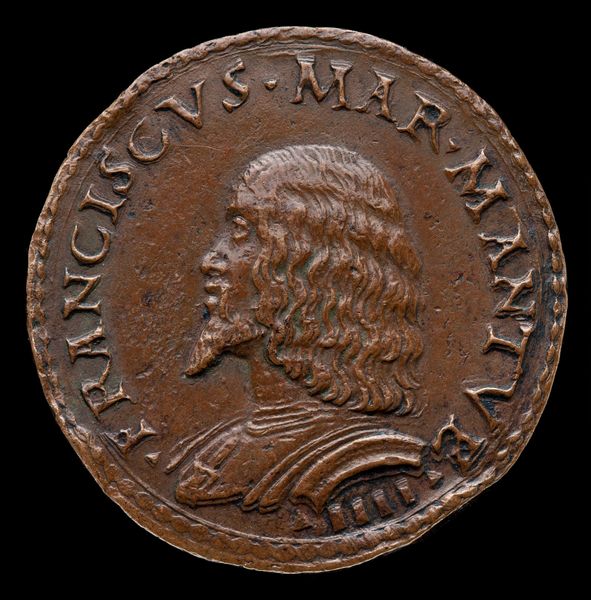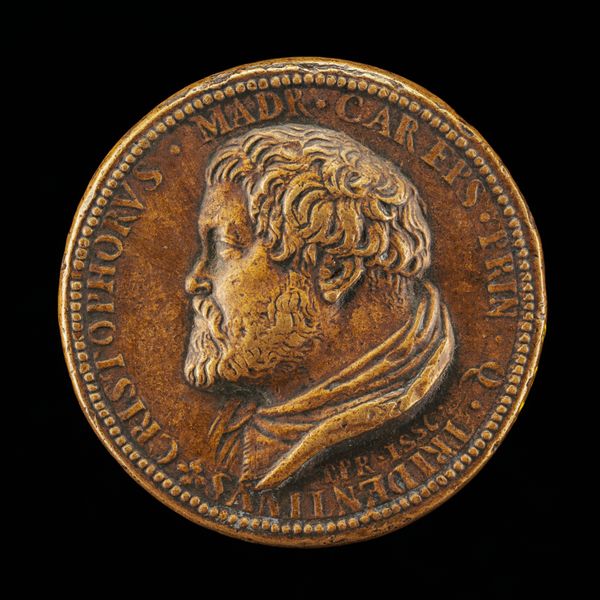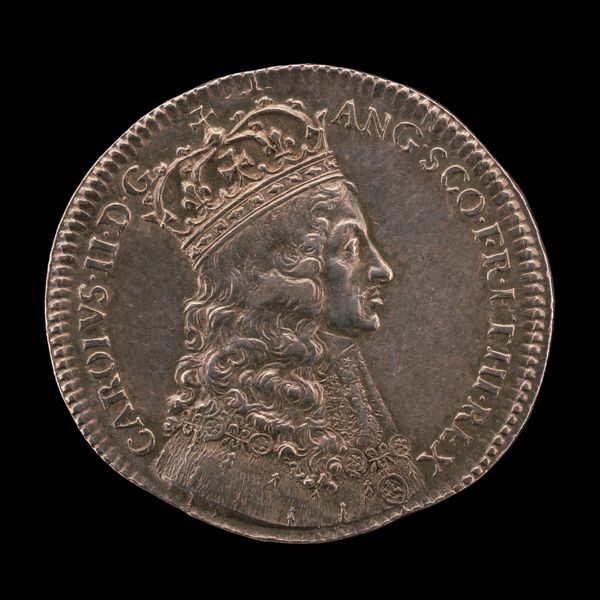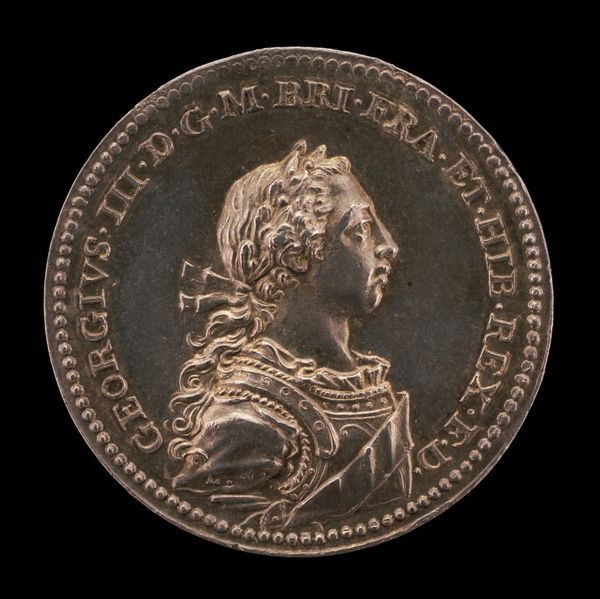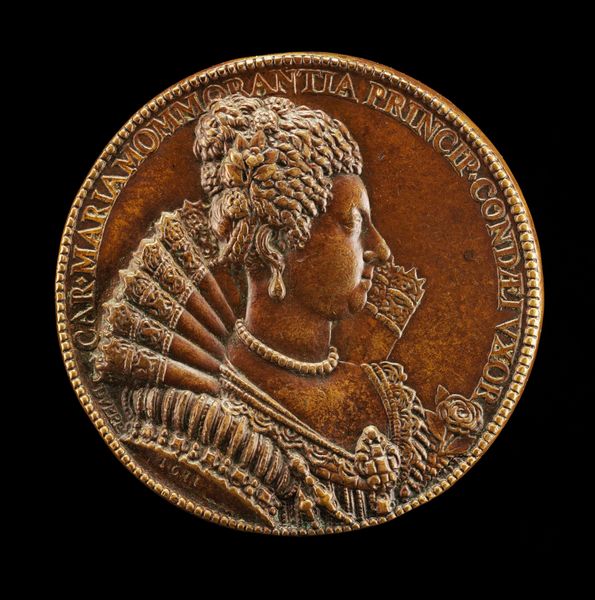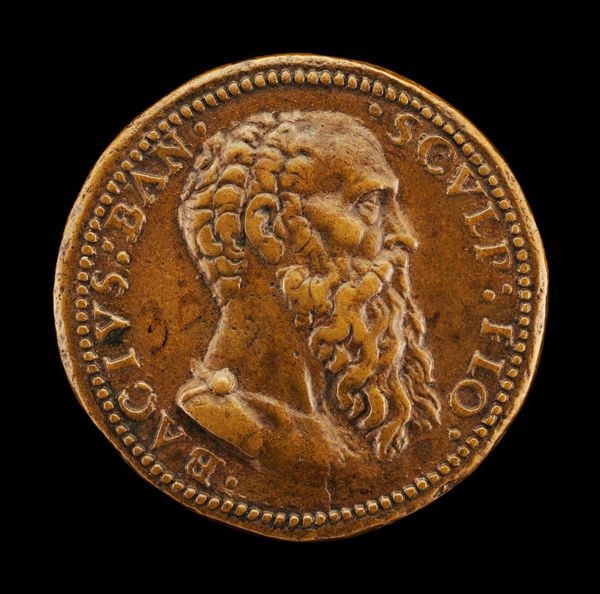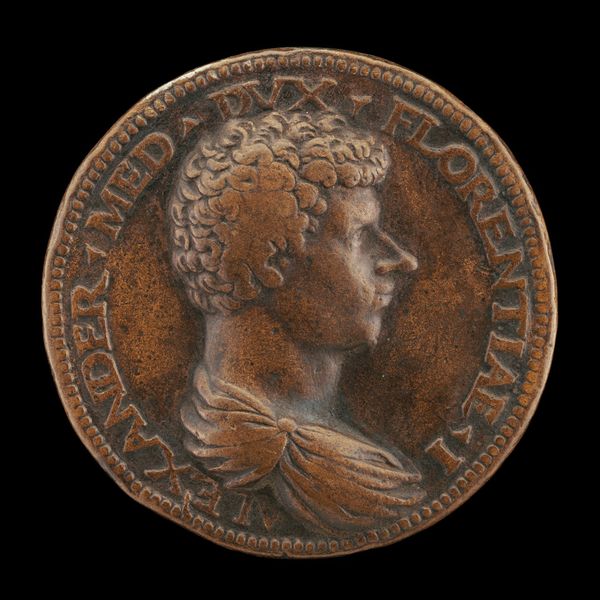![Jean de Caylar de Saint-Bonnet, 1585-1636, Marquis de Toiras, Marshall of France 1630 [obverse] by Guillaume Dupré](/_next/image?url=https%3A%2F%2Fd2w8kbdekdi1gv.cloudfront.net%2FeyJidWNrZXQiOiAiYXJ0ZXJhLWltYWdlcy1idWNrZXQiLCAia2V5IjogImFydHdvcmtzL2MzY2RmMTY5LTVhN2ItNDVlYS1hZjBiLTc2Yzg2MzBiNDNkMi9jM2NkZjE2OS01YTdiLTQ1ZWEtYWYwYi03NmM4NjMwYjQzZDJfZnVsbC5qcGciLCAiZWRpdHMiOiB7InJlc2l6ZSI6IHsid2lkdGgiOiAxOTIwLCAiaGVpZ2h0IjogMTkyMCwgImZpdCI6ICJpbnNpZGUifX19&w=3840&q=75)
Jean de Caylar de Saint-Bonnet, 1585-1636, Marquis de Toiras, Marshall of France 1630 [obverse] 1634
0:00
0:00
relief, bronze, sculpture
#
portrait
#
medal
#
baroque
#
sculpture
#
relief
#
bronze
#
sculpture
Dimensions: overall (diameter): 6.02 cm (2 3/8 in.) gross weight: 47.1 gr (0.104 lb.) axis: 12:00
Copyright: National Gallery of Art: CC0 1.0
Curator: Here we have a bronze medal dating back to 1634, created by Guillaume Dupré. It depicts Jean de Caylar de Saint-Bonnet, the Marquis de Toiras, a Marshall of France. Editor: What immediately strikes me is the baroque exuberance of the design—the tight curls of the hair, the intricate lace… it all points to a culture reveling in display and power. Curator: Absolutely. Consider the medal itself: bronze, a material historically associated with strength and permanence. Dupré uses it here to immortalize a military figure. But it's not just about commemorating an individual. Medals, particularly in this period, were potent symbols of authority. Editor: And the circular form reinforces this, doesn't it? It's a closed system, a world unto itself where the Marshall reigns supreme, encased within a neat, visually coherent frame. Curator: Precisely. Saint-Bonnet's profile, deliberately chosen over a full-frontal view, lends an air of classical dignity and evokes continuity with Roman emperors and generals memorialized through coin imagery. Think about the weight this medal carries, both literally and figuratively. Bronze was chosen precisely for durability as well. Editor: It makes you wonder what the reception was like. It also invites inquiry into how such tokens were distributed and regarded—were these status symbols given away or personally commissioned? Who controlled these objects and disseminated them as a social practice of prestige and power? Curator: The imagery likely worked on several levels. To the educated elite, it was a nod to the glories of the past and Saint-Bonnet's place within that grand narrative. To others, it presented an instantly recognizable symbol of French military might. It would project and reinforce the strength of the aristocracy and marshal lineage. Editor: I find it equally engaging to think of the labor. All that detailed work hammered and chased, such skilled hand work which suggests value far beyond the depicted persona alone. Curator: A thought-provoking piece offering us access into 17th century modes of power and presentation. Editor: Indeed, something seemingly simple reveals layers of intricate and coded social messaging that echoes across the centuries.
Comments
No comments
Be the first to comment and join the conversation on the ultimate creative platform.
